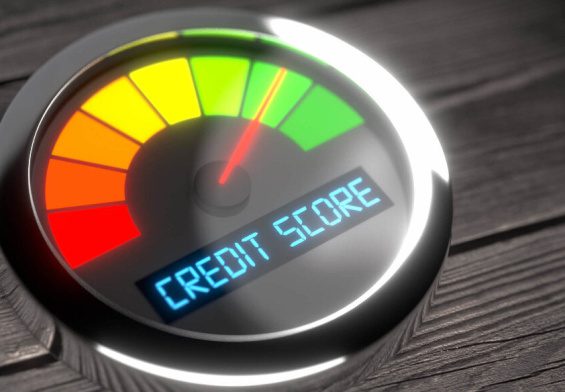
Table of Contents
How to Write a Personal Finance Blog That Attracts Readers
How to Write a Personal Finance Blog That Attracts Readers: Blogging about money is not just about numbers and spreadsheets. It’s about helping real people solve real problems—whether it’s getting out of debt, saving for retirement, or learning how to invest. Personal finance blogs have exploded in popularity because people crave trustworthy, relatable advice that simplifies complicated topics.
But standing out in the crowded world of financial content requires more than publishing generic tips. To attract and keep readers, you need a combination of strategy, authenticity, and consistency. This guide will walk you through every step of building a personal finance blog that readers actually want to visit—and keep coming back to.

Understanding Your Audience
The foundation of a successful personal finance blog is understanding who you’re writing for. Not everyone has the same financial journey.
- Beginners might be overwhelmed by jargon like “asset allocation” or “compound annual growth rate.” They need plain language and step-by-step instructions.
- Young professionals may want advice on budgeting, paying off student loans, or building their first investment portfolio.
- Families often look for tips on saving for education, buying a home, or balancing multiple financial priorities.
- Near-retirees need guidance on pensions, social security, and withdrawal strategies.
Before writing, ask: Who is my ideal reader? What problems keep them up at night? How can my blog solve them? Once you know this, tailoring your content becomes much easier.
Choosing a Niche in Personal Finance
The personal finance space is huge. Writing about “money” in general might make your blog too broad to gain traction. Instead, consider narrowing your focus:
- Budgeting and frugal living: Tips for managing money wisely.
- Debt payoff journeys: Documenting strategies for eliminating debt.
- Investing basics: Teaching beginners how to grow wealth.
- Financial independence (FIRE movement): Inspiring readers to retire early.
- Family and money: Balancing household expenses and savings goals.
- Money mindset: Exploring psychology and behavior around finances.
A niche helps you stand out and build authority faster because readers know what to expect when they land on your blog.
Writing in a Human, Relatable Tone
Finance can feel intimidating. If your writing is too stiff or filled with jargon, readers will click away. Use a conversational style. Imagine you’re talking to a friend over coffee about money.
Instead of:
“Diversification of asset classes reduces systematic and unsystematic risks.”
Try:
“Don’t put all your eggs in one basket. Spreading your money across different investments lowers your risk.”
The friendlier your tone, the more approachable your blog becomes. Readers want to learn from someone who feels like a guide, not a professor.

Creating High-Quality Content
High-quality content is the backbone of any successful blog. In personal finance, that means your posts should be:
- Practical: Offer clear, actionable steps. If you write about budgeting, include templates or sample budgets.
- Accurate: Finance is not an area where you can afford to be careless. Double-check facts, definitions, and numbers.
- Engaging: Use examples, personal stories, or analogies to simplify complex ideas.
- Evergreen: Focus on timeless advice, like “how to save for retirement,” that will be relevant for years.
Aim to write comprehensive posts that go deep into a topic rather than surface-level content. Long-form posts often perform better in search engines because they answer more questions in one place.
Structuring Blog Posts for Readability
No one wants to read a giant wall of text. Break your posts into digestible sections:
- Headings (H2, H3, H4): Guide readers and help search engines understand your content.
- Short paragraphs: Keep sentences concise. Aim for 2–4 sentences per paragraph.
- Bullet points and lists: Perfect for summarizing tips or steps.
- Examples and case studies: Show readers real-world applications.
Clear structure not only improves readability but also makes your content SEO-friendly.
The Power of Storytelling
Personal finance isn’t just about money—it’s about people. Sharing your own financial journey makes your blog relatable.
- Did you pay off $50,000 in student loans? Tell your story.
- Did you save for a dream vacation using a unique strategy? Share the details.
- Did you make mistakes, like overspending on credit cards? Be honest about them.
Readers connect with real experiences. Vulnerability and authenticity build trust faster than textbook-style advice.

SEO for Personal Finance Blogs
Great writing alone won’t bring readers. Search Engine Optimization (SEO) ensures your blog gets discovered. Key steps include:
- Keyword research: Use tools to find terms people search, like “best budgeting apps” or “how to invest for beginners.”
- On-page SEO: Place keywords naturally in headings, introductions, and meta descriptions.
- Answering questions: Structure content to answer common “what,” “how,” and “why” questions.
- Optimizing for snippets: Write concise answers (40–60 words) that Google might display directly in search results.
Remember, SEO is about helping search engines understand your content while making it easy for readers to digest.
Building Trust With Your Readers
Finance is a sensitive subject. To attract and keep readers, you need credibility. You can build it by:
- Transparency: Share when you’re not an expert in certain areas.
- Sources: Back up claims with reliable data when needed.
- Consistency: Publish regularly to show commitment.
- Engagement: Reply to comments, emails, and questions.
When readers trust you, they’ll return for advice and even recommend your blog to others.
Using Visuals and Tools
A picture can make numbers less intimidating. Enhance your posts with:
- Infographics: Summarize steps or statistics visually.
- Charts and graphs: Show savings growth or debt payoff timelines.
- Budget templates: Offer downloadable resources.
- Calculators: Simple tools like “compound interest calculators” boost interactivity.
Visuals break monotony and increase engagement, keeping readers on your page longer.
Headlines That Attract Clicks
Your headline is the first impression. A strong headline grabs attention while being clear and relevant.
Examples:
- “10 Proven Ways to Save $1,000 Fast”
- “The Beginner’s Guide to Investing Without Feeling Overwhelmed”
- “How I Paid Off $20,000 in Credit Card Debt in 2 Years”
Avoid clickbait. Readers feel cheated if the article doesn’t deliver what the title promised.
Consistency is Key
Many blogs fail because writers post sporadically. To grow your audience, consistency matters more than volume. Start with a realistic schedule—once a week or twice a month—and stick to it. Over time, your library of content grows, and search engines start recognizing your site as an authority.
Promoting Your Blog
Writing is only half the work; promotion ensures your blog gets noticed. Some methods include:
- Social media: Share snippets on platforms like Twitter, LinkedIn, or Instagram.
- Email newsletters: Build a list to keep readers engaged.
- Guest posting: Write for other finance sites to reach new audiences.
- Networking: Connect with other bloggers and collaborate.
Think of promotion as amplifying your voice so more people hear it.
Monetizing Your Blog
While helping others is the main goal, you can also turn your blog into an income source:
- Affiliate marketing: Recommend tools, apps, or books.
- Sponsored posts: Partner with financial brands.
- Online courses/eBooks: Package your knowledge into products.
- Ads: Generate income through display ads.
Monetization works best once you’ve built trust. Readers won’t buy from you unless they believe in your authenticity.
Avoiding Common Mistakes
When starting a finance blog, watch out for these pitfalls:
- Writing too broadly instead of focusing on a niche.
- Copying other bloggers’ style instead of finding your unique voice.
- Publishing inconsistently.
- Using overly complex language that scares beginners away.
- Ignoring reader feedback.
Learning from these mistakes early can set you apart from thousands of other finance bloggers.
Keeping Readers Coming Back
Attracting readers is one thing; keeping them loyal is another. Encourage repeat visits by:
- Ending posts with calls to action, like “share your thoughts in the comments.”
- Creating series content, e.g., “Step 1 to Debt Freedom, Step 2…”
- Offering exclusive freebies, like worksheets.
- Encouraging readers to subscribe to your newsletter.
The more value you deliver, the stronger your community becomes.
Conclusion
Writing a personal finance blog is about much more than explaining numbers. It’s about storytelling, problem-solving, and building trust. If you know your audience, choose a niche, write in a human tone, and stay consistent, your blog can attract a loyal readership.
Remember: people don’t just want advice. They want hope, encouragement, and practical tools to manage their financial lives. If you can deliver that, your personal finance blog will not just attract readers—it will change lives.
Also visit:-
10 Simple Ways to Bring Romance Back into Your Marriage
FAQs on Writing a Personal Finance Blog
1. What is a personal finance blog?
A personal finance blog is a website where you share tips, strategies, and stories about managing money, saving, investing, and building financial independence.
2. Why should I start a personal finance blog?
Starting a personal finance blog lets you share your knowledge, help others improve their financial lives, and even earn income through monetization.
3. Do I need to be a finance expert to write a blog?
No, you don’t need to be an expert. Many successful bloggers share their personal money journeys and lessons learned along the way.
4. How do I choose a niche for my finance blog?
Pick a niche based on your expertise or passion—budgeting, debt payoff, investing, FIRE (Financial Independence Retire Early), or money mindset.
5. What makes a personal finance blog successful?
Clear, useful advice, consistency, relatable storytelling, and building trust with your readers are the keys to success.
6. How do I find readers for my blog?
You can attract readers through SEO, social media promotion, email newsletters, and guest posting on other finance blogs.
7. Is SEO important for finance blogs?
Yes, SEO helps your blog rank on search engines, bringing in more organic readers without paid advertising.
8. How do I write blog posts that people actually read?
Use a conversational tone, break content into sections with headings, and provide real-life examples or personal stories.
9. What kind of content works best for finance blogs?
Evergreen topics like saving, budgeting, investing basics, debt payoff, and money habits usually perform well.
10. How long should a personal finance blog post be?
Long-form posts of 1,500–2,500 words perform better for SEO and provide more in-depth value to readers.
11. Should I share my personal financial journey?
Yes, personal stories build connection and trust, making your blog relatable and engaging.
12. How do I pick a name for my finance blog?
Choose a name that’s memorable, easy to spell, and reflects your niche or personality.
13. How often should I publish posts?
Consistency matters more than frequency. Aim for once a week or at least twice a month.
14. How do I structure a blog post for readability?
Use headings, bullet points, short paragraphs, and examples to make posts easy to skim and understand.
15. Can I make money from a personal finance blog?
Yes, through affiliate marketing, ads, sponsorships, and selling digital products like eBooks or courses.
16. How long does it take to make money blogging?
It can take 6–12 months or longer, depending on your consistency, SEO strategy, and traffic growth.
17. Should I write for beginners or advanced readers?
Decide based on your niche. Beginners need simple explanations, while advanced readers may want investing or tax strategies.
18. How do I get blog ideas?
Listen to reader questions, use keyword tools, browse finance forums, or write about your own money challenges.
19. Should I use images in my blog?
Yes, images, charts, and infographics make posts more engaging and help explain complex financial concepts.
20. Do personal finance blogs need disclaimers?
Yes. Always include a disclaimer that your content is for educational purposes and not professional financial advice.
21. What mistakes should I avoid in finance blogging?
Avoid jargon, inconsistency, copying other bloggers, and making unrealistic promises.
22. How do I build trust with readers?
Be transparent, share personal stories, cite reliable sources, and engage with your audience.
23. Is social media important for finance bloggers?
Yes. Social media helps promote content, build community, and attract new readers.
24. How do I use storytelling in finance blogging?
Share personal wins, failures, and lessons to make financial advice relatable and memorable.
25. What is evergreen content?
Evergreen content stays relevant over time, such as “How to Budget” or “Basics of Investing.”
26. Should I create a newsletter for my blog?
Absolutely. Email newsletters keep readers engaged and bring them back to your blog.
27. Do I need to be good at writing?
You don’t need to be perfect—clarity and relatability matter more than fancy language.
28. What tools can help me blog better?
Tools like Grammarly (for editing), Canva (for visuals), and keyword research tools can improve your content.
29. How do I promote my blog for free?
Promote through SEO, social media sharing, joining finance forums, and networking with other bloggers.
30. Should I include guest posts on my blog?
Yes, guest posts add variety and can bring in new audiences from other bloggers’ networks.
31. What is the best writing style for finance blogs?
A friendly, conversational style that simplifies complex ideas is most effective.
32. How do I make my blog stand out?
Develop a unique voice, focus on a specific niche, and provide real value with actionable advice.
33. Should I use videos or podcasts on my blog?
Yes, multimedia like videos and podcasts can expand your reach and attract different types of learners.
34. Do blog post titles matter for SEO?
Yes, titles are crucial. Use clear, keyword-rich, and engaging titles that attract clicks.
35. How can I encourage readers to return to my blog?
Create series content, offer freebies like worksheets, and encourage readers to subscribe.
36. How important are comments on my blog?
Comments create community and give you insights into what readers want to learn next.
37. Should I monetize early or wait?
Focus first on building trust and traffic, then add monetization once you have a loyal audience.
38. Can I blog anonymously about personal finance?
Yes, many bloggers remain anonymous while sharing financial advice and stories.
39. How do I measure the success of my blog?
Track website traffic, reader engagement, email subscribers, and income (if monetized).
40. What is the biggest tip for blogging success?
Stay consistent, be authentic, and always write with your readers’ needs in mind.
Also visit:-



